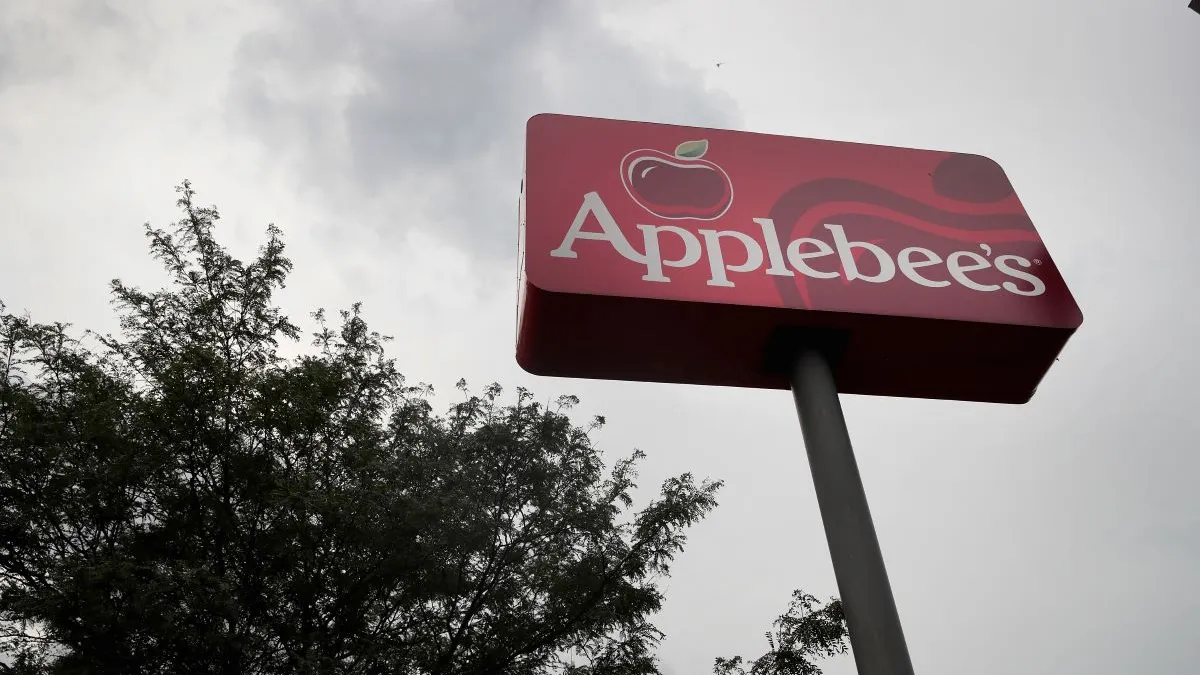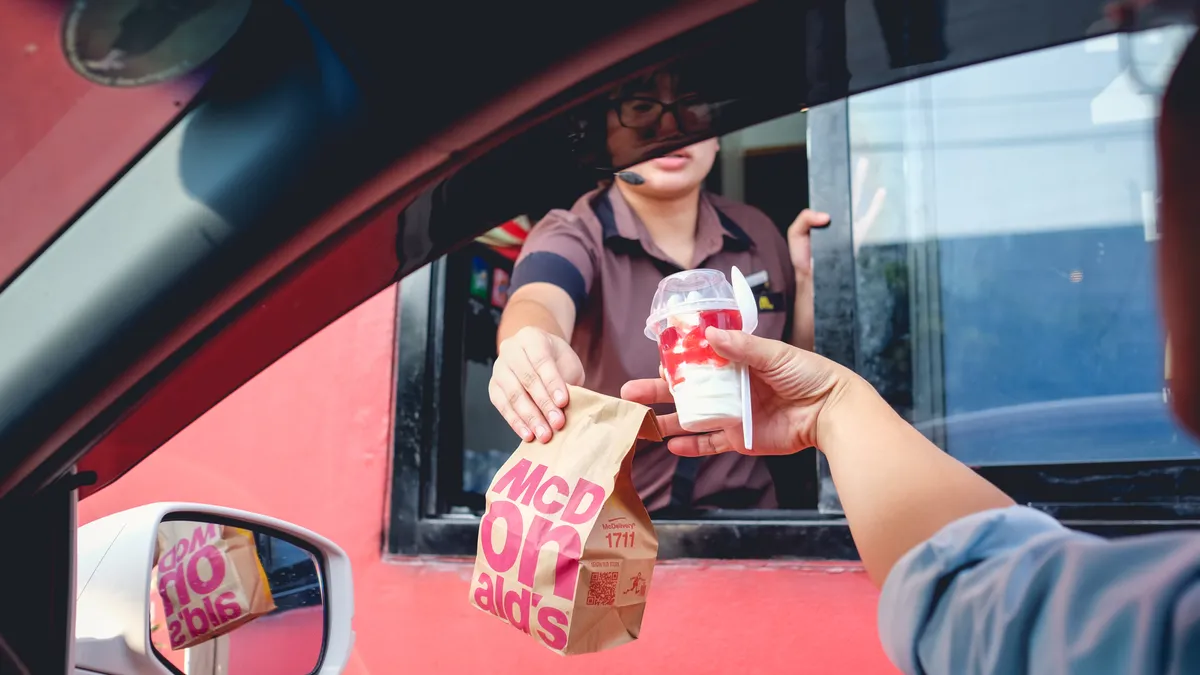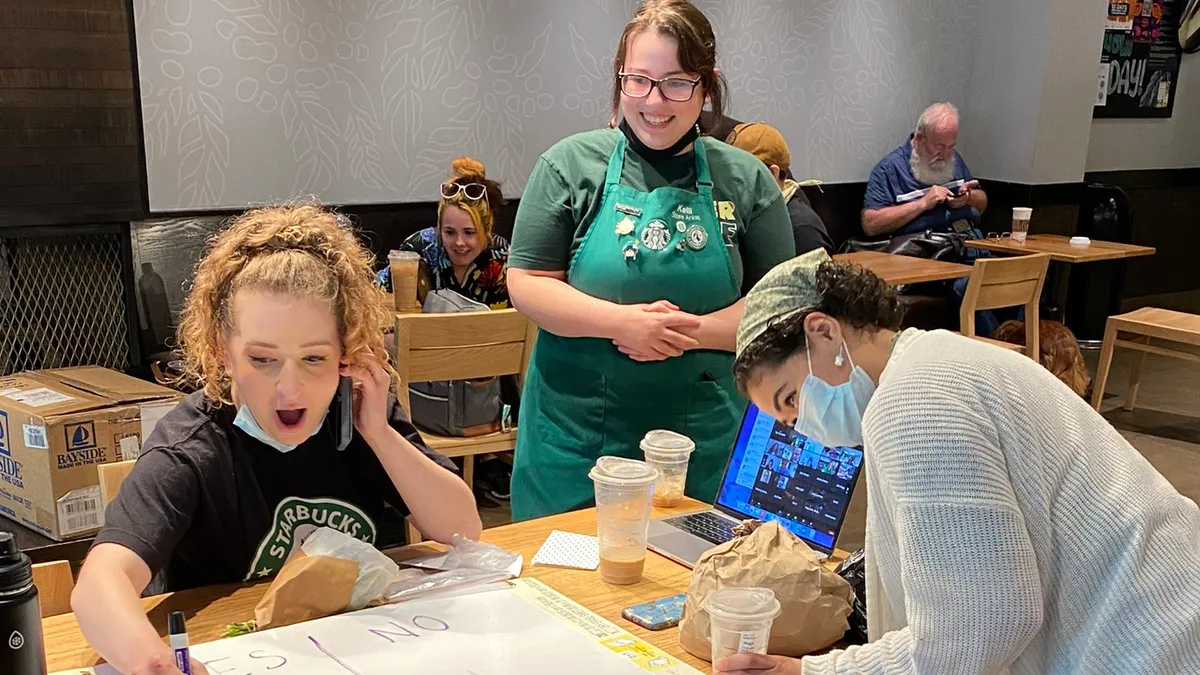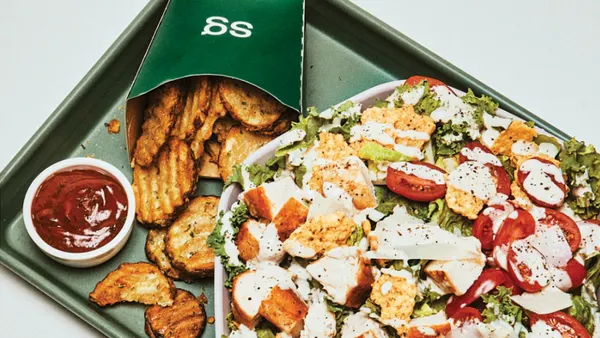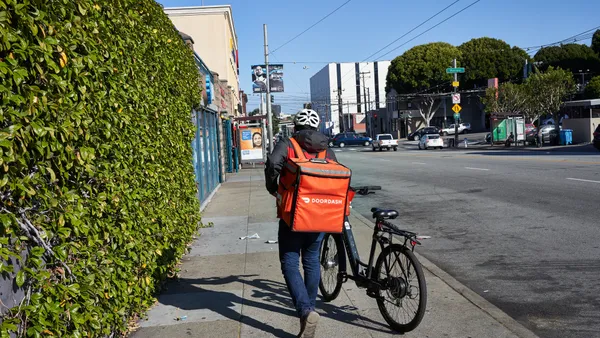Dive Brief:
- Applebee’s saw same-store sales grow 4.9% in the second quarter, driven by a significant increase in traffic, according to Dine Brands’ earnings call. This marks the first time in two years the casual dining chain has managed to grow in this key metric.
- John Peyton, Dine’s CEO, attributed the sales strength for Applebee’s to its ability to combine menu innovation — particularly new entrees — with its value platform, the Two-for-$25 deal.
- IHOP, Applebee’s sister brand, did not manage to pull out of its traffic slump, posting its sixth-consecutive quarter of same-store sales declines with a 2.3% drop, according to Dine’s earnings release.
Dive Insight:
Applebee’s has established a steady cadence of new entrees, about one per quarter, Peyton said, with Bourbon Street pasta debuting in Q1, Sizzlin’ Skillets and Steak in Q2, and Chicken Parmesan Fettucine in July. All three entrees made their entry as part of the brand’s Two-for-$25 value program, Peyton said each one has been a hit with consumers and helped drive traffic.
“Pairing this new menu innovation with our Two-for-$25 value platform is a key contributor to our traffic and sales growth,” Peyton said on the earnings call, noting that the brand’s key strategy going forward is to lean on that promotion and entree cadence.
Despite the importance of these value plays, Applebee’s value mix actually decreased modestly — in recent quarters value items accounted for roughly one-third of the chain’s orders, a level Peyton said was unusual — but in Q2 that figure dipped to 30%.
“I’m not sure exactly what optimal is, but I do know that running at about a third is higher than typical,” Peyton said. “We’re seeing it begin to slowly tick down, just in the last quarter or so.”
On the development front, Dine opened its second domestic dual-branded IHOP/Applebee’s, this time in Uvalde, Texas, owned by the same franchisee responsible for its original dual-branded store. Sales at that location are tracking significantly higher than before the unit was converted, Peyton said, demonstrating the strength of the two brands’ overlapping dayparts.
“With the second restaurant in Uvalde, the franchisee was able to significantly reduce construction costs as well as the construction and training timelines and was able to open the restaurant in four weeks,” Peyton said, noting that dual-branded units are oversubscribed for development in 2026.
IHOP, which saw comps remain positive longer and typically fall by less than Applebee’s over recent years, posted by far the weaker quarter. But Peyton said the brand is undertaking a number of new strategies to stanch the sales declines. IHOP is looking to drive traffic and visits with its House Faves value menu, but increase average check by implementing a barbell pricing strategy, Peyton said. The brand also recently brought its creative efforts in-house, hoping to catch the attention of Gen Z consumers. Peyton said this gambit worked, with TikTok engagement and followers increasing significantly.
But macroeconomic pressures have left consumers reeling and pushed many to adjust their habits, Peyton said, which hurt Dine’s ability to drive same-store sales growth.
“Guests continue to manage their check by ordering fewer beverages and appetizers as well as trading down to lower-priced items on our menus,” Peyton said.


